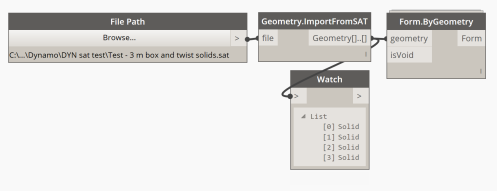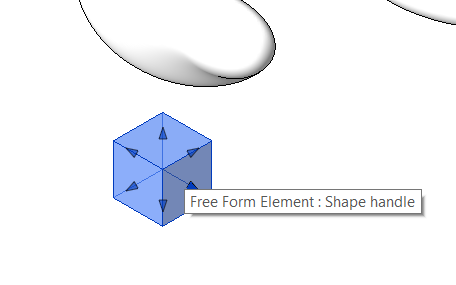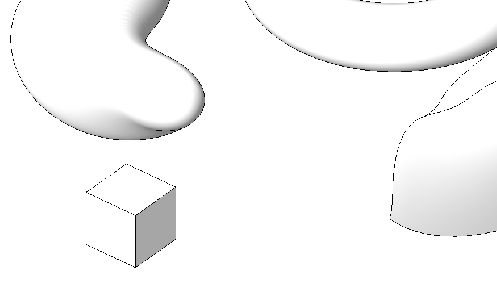Rhino to Revit (SAT to Spring Nodes)
For almost as long as Rhino and Revit have been around we have been trying to get trying to import Rhino geometry into Revit (Revit to Rhino was not really the problem as you can just export a DWG with ASCII solids which import into Rhino as NURBS surfaces). We have gone through a host of interoperability plugins (usually through Grasshopper) including Mantis Shrimp, Lyrebird, Humming Bird, etc etc…
However, it was always a question of the geometry that came in to Revit wasn’t really native Revit geometry or it did not allow for any type of geometry that was not already available in Revit out-of-the-box.
And then Spring Nodes package showed up for Dynamo…
If you were to manually import geometry from Rhino into Revit, you would export everything as an SAT from Rhino and import it as a CAD link to a generic model family in Revit. The problem is that there are are very noticeable differences graphically with this imported geometry, which pretty much the whole point of Revit (especially since Revit is pretty much only a document management program, but we won’t go into that in this post).
There are a couple of ways to go about this (all of which require Springs Nodes):
If you ware in a family environment it is as simple as this:

If you are at the project level of a Revit project then there is a just a bit more that needs to be added:
In the end though, the results are pretty much the same. You should end up with native Revit, free form elements, some of which will even display handles which can be used to edit this geometry (usually simpler, rectilinear geometries such as boxes will be fully editable, other times things like lofted geometries might have and end face that is editable).


Be aware that there is a scaling issue currently with dynamo’s SAT import nodes where the they only read the geometry as though it were in meters, but this can be easily fixed through some creative scaling before “baking” it into Revit.
This workflow can also be used to bring SAT information into Revit from Inventor as well.
More to come later on why you would use this (if it is not already obvious), how it has been used and what else will need to be developed to improve this workflow.




